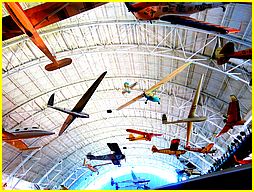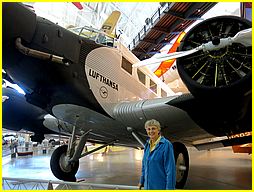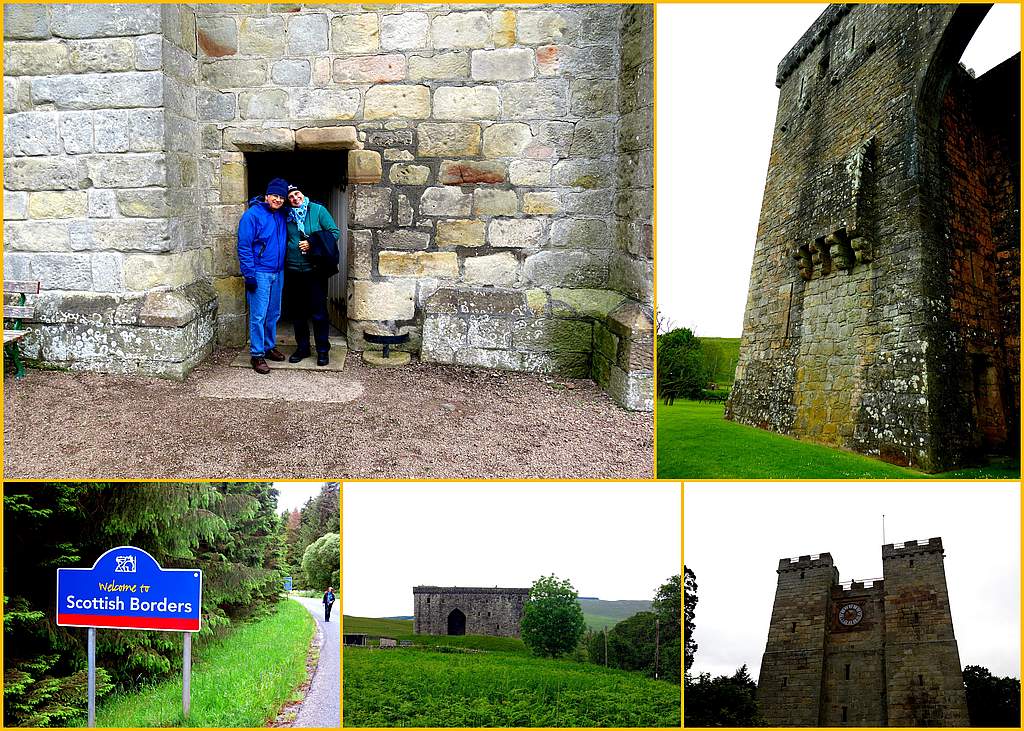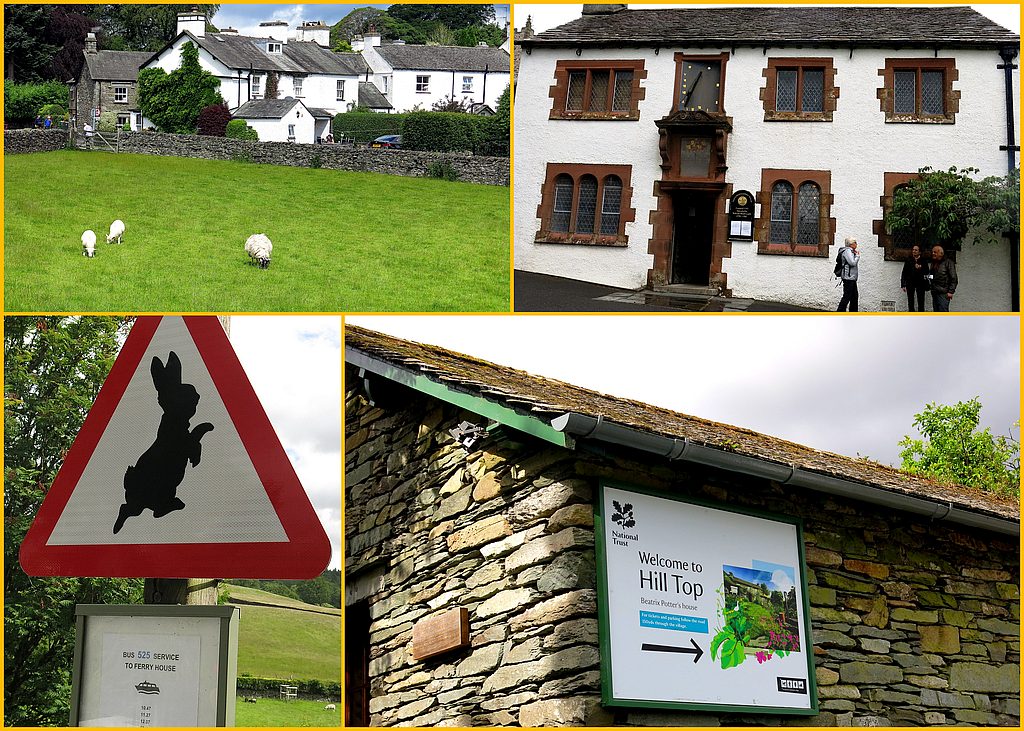Up Up & Away Delay


| The English Lake District & The Borders; Romance to Turbulence |
|---|
Introduction
On our several tours of Britain we've ranged from the southern most coast of England to the islands north of the Scottish mainland with the Lake District the notable exception. Enjoying ourselves on many of their tours we joined Road Scholar on the The English Lake District & The Borders; Romance to Turbulence program. Arriving in Manchester we met the rest of the group, all Americans save one Brit, leaving by motor coach to our first lodging in the Lindeth Howe Country House Hotel in Windermere.
| | | Return to Home Page | | |
|---|
Up Up & Away Delay


"Your flight has been delayed" That can't be good but not a surprise given our recent experiences at the Ithaca airport. "… the plane has a technical problem","… a replacement part is on the way", "… the crew's exceeded there flying hour limits","a plane's leaving Dulles" " & 7 hours later, your planes in the landing pattern. Joyce, in her wisdom had booked us to arrive at Dulles days before our flight to England was scheduled to leave for Manchester, England, via Frankfort.
In the photo, left, we took advantage of the extra time to visit the Steven F.Udvar-Hazy location of the Smithsonian Air & Space Museum. >.
Our Lufthansa flight, photo right, bigger inside than it looks on the outside, was overbooked. The airline offered a ½ discount on upgrades to business class. My stinginess automatically kicked and I declined. On second thought, why not splurge? Business class is another world! We enjoyed the hidden world of the airline lounge, a bit of bubbly prior to takeoff and comfy seats. This could become habit forming.
| | | Return to Home Page | | |
|---|
On previous tours of Britain we've seen the stone circles at Stonehenge, Salisbury, County Wiltshire, at Dartmoor Nation Park, Yelverton, County Devon and The Standing Stones o' Stenness on Orkney Island. Near Keswick we added Casterigg Stone Circle to our life list.
In the photo above, lower right. the extent of the Bronze Age circle is visible. Lower left, a close up of a portion of the circle. Upper left, Joyce and I enjoy the sunny day and each others company. Upper right, At Stonehenge rope barriers kept us far from the stones. Here you can get friendly with the individual stones and give them a hug. Careful though, as readers of Diana Gabaldon Outlander book series know hugging a standing stone can take you on a journey into the past.
| | | Return to Home Page | | |
|---|
England's Lake District, what comes to mind, gentle rolling hills? That would be very, very wrong. In the photos above not a flat spot in sight. And the roads, Hardnot Pass, 33% grades. Our van traveled North to South as it couldn't make the grade in the other direction.
In the photo above, upper left, we're on the site of the last working slate mine in Cumbria the Honister slate mine, once a worldwide supplier of roofing tiles. Upper right, the road from the mine site passes through the valley of the gentle rolling hills
. Lower right, livestock graze on the fells surrounded by another of the Lake District's prolific residents, rocks. Lots and lots of stones walls built and maintained since Roman times. Lower left, a waterfall meanders down a fell.
| | | Return to Home Page | | |
|---|
The Borderlands, Every Home a Fortress - Scourge of The Reivers

The Borderlands, Every Home a Fortress - Scourge of The Riever's
The kingdoms of Scotland and England were at war from the 14th through the 17th centuries. Once farming season was completed cross border raids on livestock and food, clan feuding and murder were an acceptable way of life for both sides. Raiding parties could be as large as 1000 men and horses gathered on relatively short notice.
No enforceable law existed. To protect themselves each family home, simple or grand, was fortified. Most homes were stone built the one thing this land had in abundance. In the photo above, lower left, welcome to the land of the Scottish Reivers. Lower center, a one room home built over a paddock for the livestock. A ladder between the two levels would be pulled up in case of a raid. Lower right, at the grand end of the spectrum rises a castle of stone. Upper right a closeup of the castle. Upper left, Joyce and I ready to to repel raiders.
Fans of the sci-fi series Firefly will recognize the Reivers as the antecedents of the shows Reavers "Reavers ain't men. Or they forgot how to be."
| | | Return to Home Page | | |
|---|
Hawkshead - Peter Rabbit, Beatrix Potter & Scholars

Hawkshead - Peter Rabbit, Beatrix Potter & Scholars
Prior to her marriage in 1913 Beatrix Potter lived in her home, Hilltop, at the North end of Lake Windermere in Near Sawrey, close by Hawkshead in Cumbria county. In the photo above, lower right, follow the signs to Hilltop. Curling up in cozy window niches in the home I enjoyed re-reading her whimsical books featuring characters including Peter Rabbit, Squirrel Nutkin, Jemima Puddle-Duck and the villainous Mr. McGregor. Photo upper right, the English romantic poet, William Wordsworth, received his early education at the Hawkshead Grammar School. Founded in 1585 it provided a classical education to young gentlemen of promise. It also provided endless practice with penknives as centuries of these young gentlemen carved their names and quips into every wooden surface, many of which are buried under layer on layer of new construction. Wordsworth's contribution is prominently displayed. lower left, in the home of Peter Rabbit it follows that "watch out for bunnies" warning signs are to be expected. Photo upper left, on the village commons sheep munch lunch.
| | | Return to Home Page | | |
|---|
The Roman legions could defeat the Celtic tribes in conventional battle but were unable to hold the ground against hit and run guerrilla attacks. In the early second century Emperor Hadrian ordered a defensive wall to be built in northern Britain. On defensible ground a wood and turf barrier was first thrown up. Over the next 7 years the Roman legions, with master masons, replaced wood and turf with stone. At intervals of a Roman mile, mille passum, 1000 paces, small forts, milecastles,and turrets, observation posts, were added. A fraction of the wall, though in ruins, stands to this day. 17 centuries passed and Roman engineering has stood the test of time. What have we built in our time that will be able to claim the same?
In the photo above, lower right, Our first glimpse of the wall, a short and low section along the roadway. Bottom center, the wall gets longer and higher. Lower left, a turret in Hadrian's wall. Upper left and right, well preserved stretches of the wall disappear into the distance.
| | | Return to Home Page | | |
|---|
Romans occupied Britain for nearly four centuries. Dig a hole and you're very likely to find a Roman pot shard, small cube shaped tiles used to make mosaic, roof tiles and clasps to pin garments together. The Vindolanda site was first occupied by the Romans in the late first century and occupied for over 300 years. First a wood and turf fort was built eventually replaced by one of stone. A vicus, a self governing civilian settlement, grew up around the fort. Soldier's families, inns, shops to serve the troops and the obligatory taverns filled the vicus. Excavation At Vindolanda began in 1970 and has been continuously dug to date under the auspices of the Vindolanda Trust.
In the photo above upper left, welcome to Vindolanda. The fort itself covers about 3 acres and the surrounding vicus nearly 13. Lower left, a team of volunteers and professional archaeologists carefully work their way into another layer of history. If you're of a mind to dig in the broiling sun, or more likely in Britain the pouring rain, the Vindolanda Trust wants you. Lower right, a recreation of a decorated horse bridle and armor, perhaps belonging to an officer, based on recovered pieces of tack found on site. Upper right, a Roman altar dedicated to Jupiter Dolichenus, a blending of Roman Jupiter and a Syrian sky god. The cult was very popular with Roman soldiers.
| | | Return to Home Page | | |
|---|